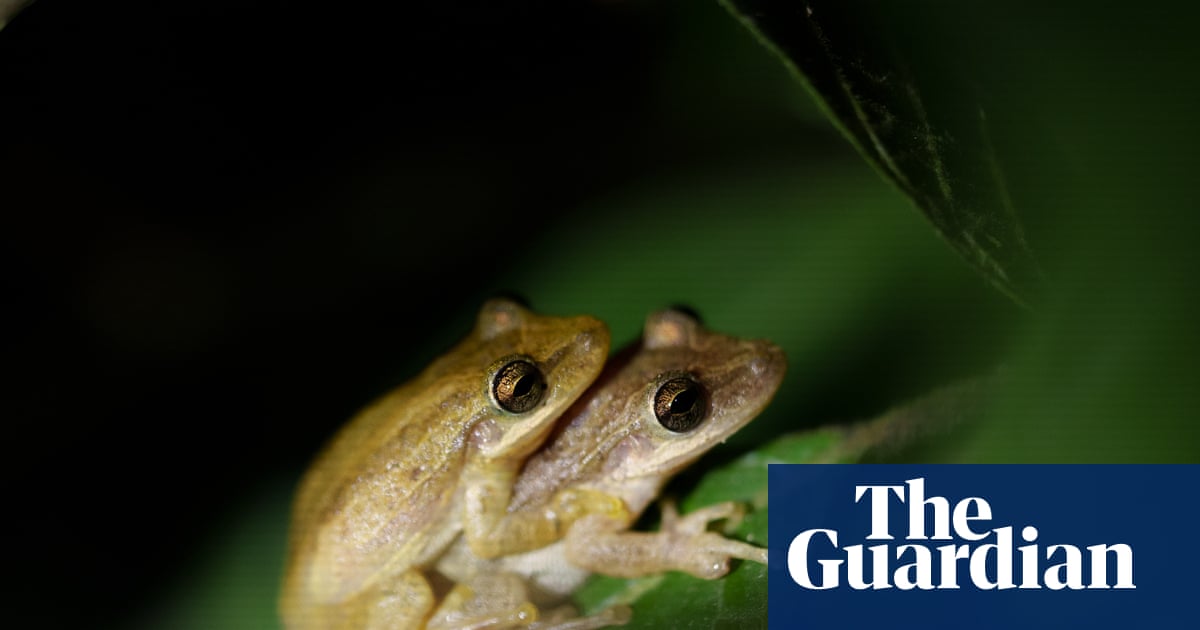
"On the way to her office at the Charles Darwin research station, biologist Miriam San Jose crouches down near a shallow pond shrouded by vegetation and reaches deep into the foliage, pulling out a small green plastic box recorder. She left it there overnight to capture the infamous croaks of a Fowler's snouted treefrog (Scinax quinquefasciatus), known to Galapagos scientists as an invasive threat, with repercussions researchers are only beginning to grasp."
"Genetic studies suggest that, over the years, there have been repeated accidental introductions to the archipelago, and the frogs now have a strong foothold on two islands: Isabela and Santa Cruz. The population is growing so fast that scientists have been struggling to keep track, estimating numbers in the hundreds of thousands on each island, across urban and agricultural areas, but also in the protected Galapagos national park."
Until the late 1990s, the Galapagos had no native amphibians. Small tree frogs arrived then, likely as stowaways on cargo ships from mainland Ecuador. Fowler's snouted treefrogs became established on Isabela and Santa Cruz. Genetic studies indicate repeated accidental introductions and a strong foothold on both islands. Populations are expanding rapidly across urban, agricultural, and protected national park areas. Mark-recapture attempts produced very low recapture rates, implying vast numbers; researchers estimated 6,000 frogs in a single pond and suggest even higher totals. Acoustic noise from dense calling populations reflects their abundance. The frogs are considered an invasive threat with emerging ecological repercussions.
Read at www.theguardian.com
Unable to calculate read time
Collection
[
|
...
]